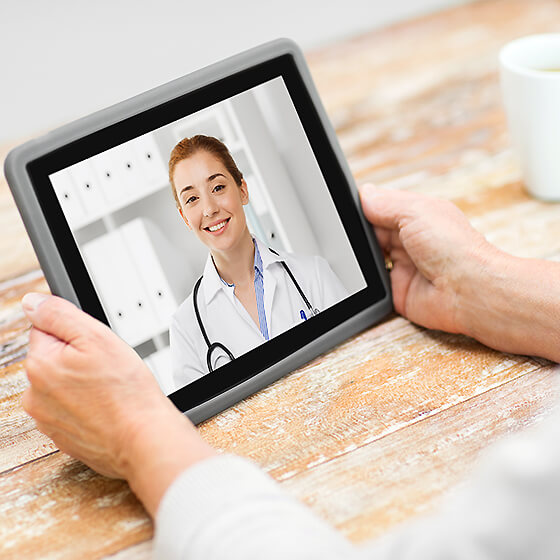Virtual doctor’s appointments have been in effect in many communities for some time now, especially remote ones with a lack of access to doctors. However, with the increased lockdown measures starting in March of 2020 as a result of COVID-19, virtual doctor appointments have been normalized for all communities and have risen in popularity. public health officials have instructed doctors and health care workers to limit in-person appointments to patients who require immediate or emergency care. This means now more than ever ‘Telemedicine’, medicine performed virtually, has been implemented into clinics across the country. This makes seeing the doctor easier than ever as you can book an appointment and then visit them virtually through the convenience of your phone or device. As convenient as “telemedicine” is, it also presents new challenges. So here is how to get the best out of your virtual doctor’s appointments.
Appointments
If you have a primary care doctor who offers “telemedicine”, ensure that you are taking advantage of that before booking appointments with walk-in virtual clinics. Your family doctor will know you and your medical history best and will be able to consider your specific circumstances when providing you expert care. Research shows that people who have solid relationships with their healthcare providers experience a better quality of care. When deciding the best place to host your virtual appointment, consider your internet quality and appropriate space. Utilize a private space in your home that is quiet, well-lit, and free of distractions.
Connections
The word ‘connection’ has taken on a whole new meaning regarding communication, especially during lockdown or quarantine procedures. It is challenging to build an emotional connection with a healthcare professional virtually and this connection is important for communication. You need to feel safe and vulnerable enough to share your specific health concerns with your physician, and this is difficult to do while having discussions predominantly over the phone or the Internet. However, another form of ‘connection’ you need to be mindful of is your Internet connection. It can be frustrating to attempt to communicate effectively when the Wi-Fi is continually being disrupted. Try to use a device with a secure connection to the Internet such as a computer with an Ethernet cord to maximize the stability of your internet connection. If you must use a phone or iPad, ensure you are not downloading or streaming anything in the background as this will also slow down or disrupt your connection. Sometimes this virtual communicating will be a new experience for you, so asking a friend or family member who is tech-savvy can help you to better understand the platform you are using.
Self-Assessment
Physical distancing and using virtual doctor’s appointments are projected to last months or even longer, so now is the perfect time to learn how to be the best advocate for your health care. Learning simple self-assessment skills and purchasing safe medical gear for the home can give you and your health care provider the most detail about your health concerns. Some basic vital signs to have data on which are easily self-assessed are your heart rate and respiratory rate. The easiest place to check your pulse is on your wrist or your neck as those places have major arteries. Using a timer, which is available on all phones and devices, count how many heartbeats you can feel in 30 seconds and then double it to calculate your heart rate. Use this same technique to calculate your respiratory rate. Your breathing rate is counted by how many breaths you take in 30 seconds and double that. A few handy tools to have on hand depending on your specific circumstances are a:
- glucometer- monitors blood sugar level
- peak flow meter- monitors for lung conditions
- pulse oximeter- monitors for oxygen levels
- thermometer- monitors body temperature
As well, ensure that if you are experiencing any acute or chronic health conditions that you are monitoring your basic human functions such as your appetite, water intake, food intake, sleep quality, and quality and consistency of bowel movements. if you notice any irregularities you can document them in a health Journal and even take a picture if there is something specific or concerning. This documentation can be very helpful and effective when communicating with your health provider.
Learning how to be your own best advocate for your health care especially during a turbulent time like a global pandemic can be fraught with anxiety and misinformation. Ensure that the research and information you are accessing and informing yourself with is from a reputable source. There are a variety of disreputable sources on the Internet that will manipulate and misinform you. Take everything you read with a grain of salt and a critical eye. It is best to connect directly with your family doctor or a walk-in clinic physician when experiencing any health conditions.
We also recommend you check these related posts in our Home Care Services blog:

